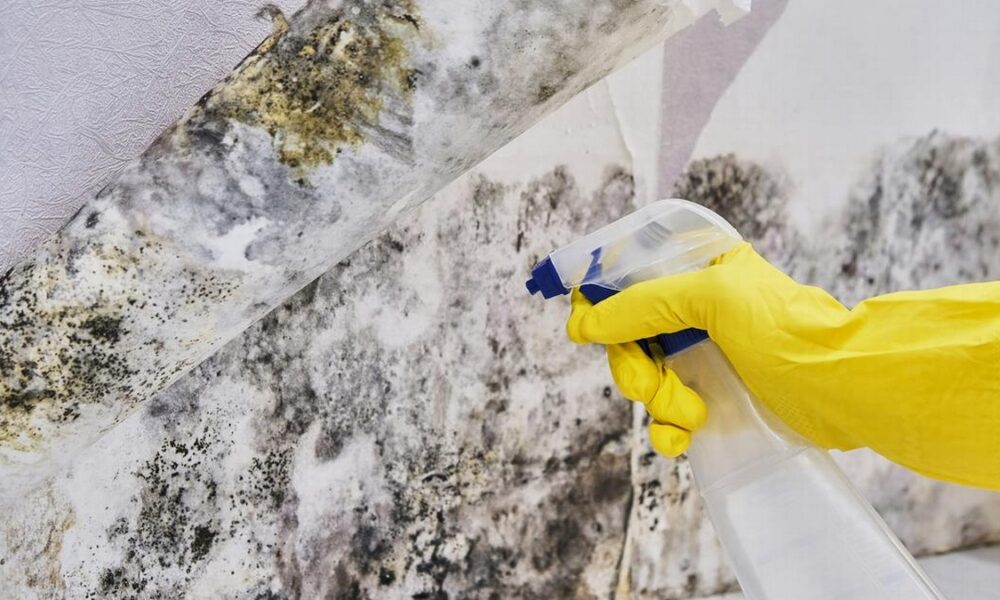Mold Testing Investment for Homeowners

Imagine moving into your dream home, only to discover a silent invader thriving in your walls, threatening both the structure and your health. Mold is more than an unsightly nuisance; it’s a potentially dangerous hazard that can impact your home and well-being if left undetected.
Routine mold testing might not be on the average homeowner’s radar, but it should be. This article will explore why mold testing is a crucial investment, how to identify warning signs, and the steps involved in the testing process. By the end, you’ll have the tools to safeguard your home from mold and protect your family’s health.
Companies like nonstoprestore.com are using advanced technology gadgets for mold inspection and testing. These gadgets normally include a moisture meter, Flashlight, infrared thermal camera, Hygro‑thermometer, and other similar tools. Some companies are also using trained k9 dogs for mold inspection.
Why Routine Mold Testing Matters?
Mold isn’t always easy to spot. It can grow in hidden areas like behind walls, under carpets, or in your HVAC system. Left unchecked, mold can cause serious structural damage to your home and lead to various health issues, particularly for those with asthma, allergies, or compromised immune systems.
The Cost of Ignoring Mold
Mold may start small, but it doesn’t stay that way for long.
- Structural Damage: Mold can weaken walls, floors, and ceilings, leading to costly repairs.
- Health Risks: Chronic exposure to mold has been linked to respiratory problems, skin irritation, and worsened allergies. Some toxic molds can even cause neurological effects.
- Mold infestations can decrease the value of your home and deter potential buyers.
Considering the potential financial and health implications, regular mold testing is a small price to pay for peace of mind.
Recognizing the Signs of Mold Infestation
Mold isn’t always visible, but it often leaves clues. Keep an eye (and nose) out for these signs in your home:
Does your home smell damp or earthy, no matter how often you air it out? Mold often produces a musty odor that’s hard to miss. Mold can appear as black, green, or white spots on walls, ceilings, or even furniture. Pay special attention to damp areas like bathrooms and basements. If you or your family members experience unexplained sneezing, coughing, or itchy eyes, mold could be the culprit. Mold thrives in moist environments. If you’ve had a leaky roof, burst pipe, or flooding, there’s a higher risk of mold growth in affected areas. Excessive indoor moisture, such as condensation on windows or high humidity levels, can create the perfect conditions for mold to thrive.
Knowing these warning signs can help you act quickly to address potential mold issues before they escalate.
The Mold Testing Process Explained
Routine mold testing is an easy and straightforward process that can uncover hidden mold problems in your home. Here’s a step-by-step guide to what testing typically involves.
1. Consult a Professional Mold Inspector
While DIY mold testing kits are available, a professional inspector will have the expertise and specialized equipment needed to provide accurate results. They’ll also know where to look if mold isn’t immediately visible.
2. Visual Inspection
Inspectors will examine key areas of your home, focusing on spots prone to moisture like basements, bathrooms, kitchens, and attics.
3. Air and Surface Sampling
Testing typically involves collecting air and surface samples to detect mold spores. This can uncover hidden mold that isn’t visible to the naked eye.
4. Laboratory Analysis
Samples are sent to a lab for detailed analysis to identify the type and concentration of mold present. Understanding the type of mold can help you determine the severity of the issue and how best to address it.
5. Receive a Comprehensive Report
After the analysis, the inspector will provide a report outlining their findings, possible causes, and recommended next steps.
Don’t wait for mold to become a visible, costly problem. Routine testing helps ensure you catch potential issues early.
Prevention is Better Than Cure
Mold prevention should always be your first line of defense. Here are steps you can take to reduce your risk of mold growth in your home.
Keep indoor humidity between 30% and 50%. Use dehumidifiers and ensure proper ventilation in high-moisture areas like bathrooms and kitchens. Address any leaks in your roof, plumbing, or windows as soon as possible. Even a small leak can lead to significant mold problems if ignored. Ensure your home is well-ventilated, particularly in areas prone to dampness. Install exhaust fans in bathrooms and kitchens to remove excess moisture.
Carpets in areas like basements or bathrooms can trap moisture and encourage mold growth. Consider non-porous flooring options instead. Act quickly after any flooding or water damage. Clean and dry affected areas within 24–48 hours to prevent mold from taking hold. If you’re renovating or building, opt for mold-resistant drywall, paints, and furnishings in areas prone to dampness.
The Value of Routine Mold Testing
Regular mold testing is not just about avoiding worst-case scenarios; it’s about protecting your home, health, and family. Testing sets you up for proactive management rather than reactive fixes.
By investing in routine checks, you’ll not only maintain the structural integrity of your home but also create a safer, healthier living environment.
Conclusion
Mold may be an inevitable part of the natural world, but it doesn’t have to be a part of your home. By following these simple tips and investing in routine mold testing, you can prevent or address any potential issues before they become major problems. Keep your home safe and healthy for years to come by staying proactive and informed about mold prevention and management. With these steps in place, you can rest easy knowing that your home is a haven from harmful mold growth.
Additional Tips for Mold Prevention
Fix any leaks or water damage immediately. Monitor humidity levels in your home and use a dehumidifier if necessary. Regularly clean and maintain your HVAC system





